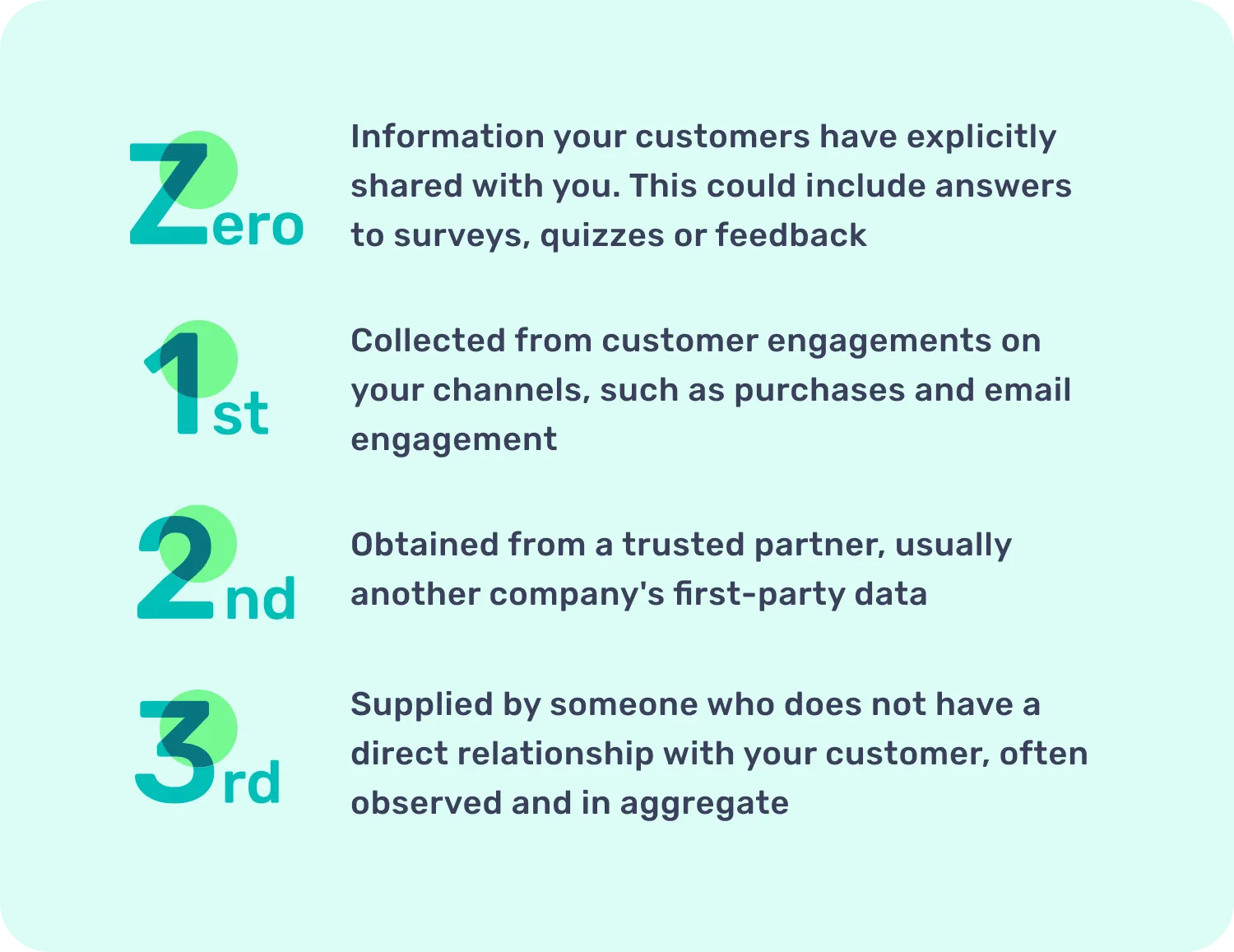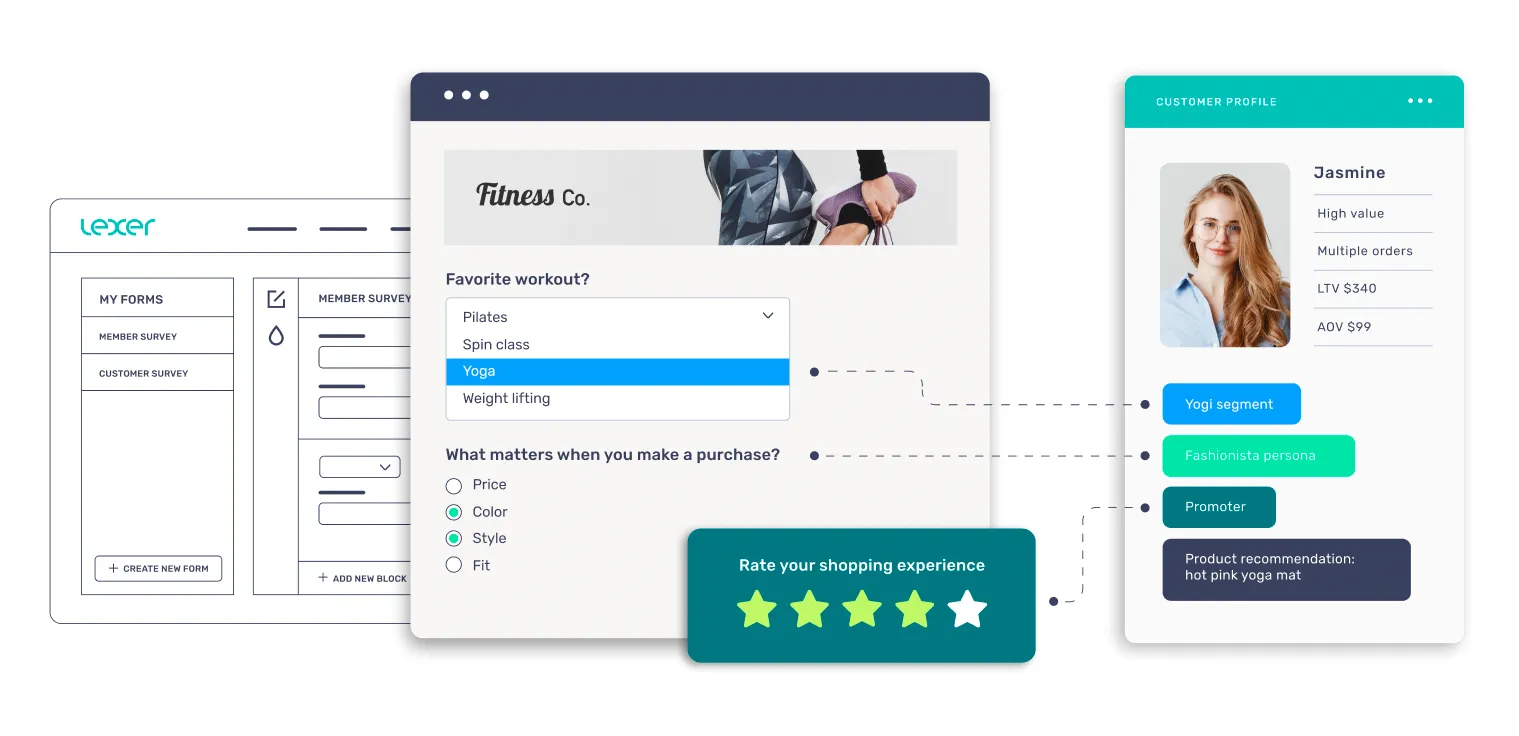October 7, 2022
Zero-party data is the new hero for marketers in the cookieless future
Privacy legislation and ad-tech changes have made marketers rethink their data-driven marketing strategy. GDPR and CCPA have become the latest must-know acronyms, and the shift to opt-in marketing is here with the looming death of third-party cookies. Learn how a CDXP can help you make the most of zero-party data.
Industry changes, along with consumers’ increasing demand for both privacy and personalization, are impacting the way retailers need to approach marketing.
Understanding paid campaign effectiveness is more complex than ever. Capturing consent is a must. Customer acquisition costs (CAC) are rising. And managing customer data across all touch points has never been more important.
How can marketers respect their customers’ privacy and still collect data to inform campaigns, targeting, and personalization? One answer is, zero-party data.
So what is zero-party data?
Zero-party, or declared data as it’s sometimes called, is data your customers have explicitly shared with you. This could include data from surveys, quizzes, feedback forms, or competitions.
Instead of buying or assuming information about customers, today’s customer-centric brands are asking for insight into customer needs, interests, and intent. This information, collected through consensual and proactive engagements, is known as zero-party data.
Zero-party data comes with its own set of considerations. On one hand, a customer has told you something. This makes it much easier for marketing teams to drive revenue with highly targeted personalized campaigns. However, collecting zero-party data is not that simple. There needs to be a value exchange. A customer will think ‘what’s in it for me?’ There needs to be a compelling reason for your customer to provide you with this information.

Building rich customer profiles
For today’s marketers, zero-party data is the fuel that powers the personalization engine. It’s a result of consumer trust—but consumers don’t just hand over this information to any brand that asks for it.
Remember, consumers provide zero-party data as a direct value exchange, so you need to offer them something in return. This return might be a discount on their next purchase, a chance to win a prize, or even access to exclusive content.
Keep in mind, zero-party data shouldn’t be collected, managed, and activated in isolation or as a once off. You should use zero-party data to augment your first-party data and continuously improve your segmentation, personalization, and retention efforts. Remember to utilize multiple owned channels and touchpoints. Tools like Customer Data Platforms (CDPs) can help you efficiently manage this.
By unifying all of your data to achieve a single customer view, you can identify your high-value customer audiences and figure out what makes them tick. Your zero-party data strategy should start with these high-value customers because those are the audiences who are most important to you. As your customers continue to respond to your surveys, quizzes, and other collection tactics, you’ll grow your database for more holistic insight into who your ideal customers are and how to keep them engaged with your brand. Ultimately, this tailored messaging drives increased growth and revenue by improving conversion rates and increasing loyalty through personalized content.
A few collection tactics we suggest you try:
- Surveys and questionnaires. Discover how award-winning spirits brand, Starward Whisky, utilized Lexer’s CDXP to improve engagement and find deep customer understanding. Using Lexer’s tools and guidance to launch a post-purchase survey campaign, the team at 5.11 learned more about what makes their customers tick while driving additional sales and lifetime value growth.
- Post purchase feedback and customer satisfaction. Net Promoter Score (NPS) survey is one of the most widely-adopted tools for measuring satisfaction and loyalty—but it only scratches the surface of genuine customer understanding. Here’s why augmenting your traditional NPS analysis with insights from surveys can help you learn much more about your customers.
- Contests, giveaways and sweepstakes. Grow your email list and enrich existing customer profiles too. Target lookalikes of your best customers to grow your list with new potential high value emails, at the same time asking preference and interest questions which will allow you to segment and personalize to new customers from day one. Competitions and sweepstakes are great to acquire new people to your brand but they can also be used to target existing customers who you wish to either re-engage or further enrich.
Turn forms and surveys into actionable insight
A marketing-friendly CDXP like Lexer, can help you reshape your data around the customer, providing 360-degree customer profiles and predictive insights based on proven models. As the central hub for all of your enriched customer data, a CDXP gives you the ability to analyze and activate across every channel.
Lexer’s secure Form Builder gives you the ability to easily collect zero-party data via fully customizable forms - unifying the responses to individual profiles in the CDP in real-time for analysis, segmentation and personalization.

Know your customer, grow your business
Lexer is the CDXP of choice for over 150 leading brands including Kathmandu, Supergoop!, Sur La Table, Good American and True Religion. We transform disconnected data into actionable insights, and provide the tools to automate and optimize the customer experiences that drive sales.
To learn more about how Lexer can help you create remarkable customer experiences, book a demo using the calendar below.
Speak with our retail experts

